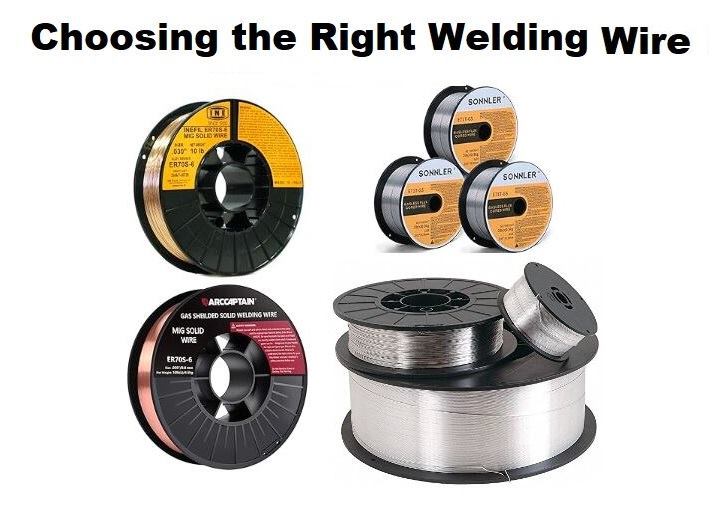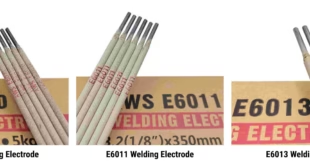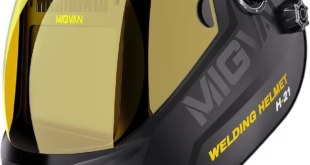Choosing the Right Welding Wire – Buying Guide
Welding is an essential skill in various industries, from construction and manufacturing to automotive repair and artistic creations. To achieve the best results in your welding projects, selecting the right welding wire is crucial. With advancements in technology and the introduction of new materials, the landscape of welding wires is continually evolving. In this buying guide, we’ll explore the key factors to consider when choosing the right welding wire for your specific needs.
Key Factors to Consider When Choosing the Right Welding Wire

1. Understand the Basics
Before delving into the specifics, it’s essential to understand the fundamentals of welding wires. Welding wires are consumable electrodes used in various welding processes, including MIG (Metal Inert Gas), TIG (Tungsten Inert Gas), and stick welding. These wires come in a variety of materials and sizes, each suitable for different applications.
2. Material Matters
The choice of welding wire material is perhaps the most critical factor in your decision. Different welding projects require different materials to ensure strength, durability, and weld quality. The most common materials include:
- Mild Steel: Ideal for general-purpose welding, mild steel wire is versatile and suitable for a wide range of applications.
- Stainless Steel: For projects that require corrosion resistance, such as food processing equipment or outdoor structures, stainless steel wire is the go-to choice.
- Aluminum: When welding aluminum, you’ll need aluminum welding wire, which is designed to work with this lightweight and corrosion-resistant material.
- Carbon Steel: For high-strength welds, carbon steel welding wire is a robust option, commonly used in structural and heavy equipment applications.
- Copper: Used for welding copper and copper alloys, copper welding wire is essential for electrical and plumbing applications.
Each material has its own unique properties, so ensure you choose the one that aligns with your project’s specific requirements.
3. Wire Diameter and Thickness
The diameter of the welding wire is another critical factor to consider. Thicker wires generally deliver more amperage, making them suitable for heavy-duty welding tasks. Thinner wires, on the other hand, are better for precision work and can help reduce heat input into the base material. Be sure to check your welding machine’s compatibility with the wire diameter you intend to use.
4. Welding Process
The welding process you plan to use also influences your choice of welding wire. Different processes, such as MIG, TIG, and stick welding, have their own unique requirements when it comes to wire type. Make sure the wire you select is compatible with your chosen welding method.
5. Shielding Gas
In some welding processes, like MIG and TIG, shielding gas is used to protect the weld from atmospheric contamination. The choice of shielding gas, and its compatibility with your welding wire, is crucial. The right combination of gas and wire can significantly impact the quality of your welds.
6. Packaging
Consider the packaging of the welding wire. Spools, coils, and drums are common packaging options. The choice depends on the volume of welding you plan to do and the compatibility with your welding machine. Large projects may benefit from wire drums, while smaller tasks can make do with spools or coils.
7. Quality and Brand
The quality of the welding wire is essential for a successful welding project. Choose reputable brands known for producing high-quality, reliable wires. Don’t compromise on quality, as subpar wires can lead to weak welds and costly rework.
8. Consult with Experts
If you’re unsure about which welding wire to choose, it’s always a good idea to seek advice from welding professionals or consult with experts at welding supply stores. They can provide valuable insights based on your project’s specific requirements.
9. Cost Considerations
While quality is paramount, cost should not be overlooked. Welding wire prices can vary significantly depending on the material, brand, and packaging. It’s essential to strike a balance between quality and affordability. Sometimes, investing a bit more in a higher-quality welding wire can save you money in the long run by reducing the need for rework and the consumption of consumables.
10. Storage and Handling
Proper storage and handling of welding wire are often overlooked but can have a significant impact on its performance. Store your welding wire in a dry, clean area to prevent contamination or rust. Keep it in its original packaging until you’re ready to use it. Also, handle the wire carefully to avoid kinks or damage, which can lead to feeding issues during welding.
11. Test and Practice
Before embarking on a critical welding project, it’s a good practice to test different welding wires and settings on scrap material. This allows you to fine-tune your technique and ensure you have the right combination for the job. It’s also an excellent way to get a feel for how a particular welding wire behaves under different conditions.
12. Stay Informed
The welding industry is constantly evolving, with new technologies and materials emerging. Stay informed about the latest developments in welding wires, equipment, and techniques. This knowledge can help you make informed choices and stay competitive in your field.
13.Environmental Considerations
In today’s world, environmental responsibility is more critical than ever. Consider the environmental impact of your welding wire choice. Some wires are designed with eco-friendly features, such as reduced fumes and emissions, making them a better choice for projects where environmental concerns are a priority.
14. Safety Precautions
Safety should always be a top priority when working with welding equipment and materials. Ensure you have the appropriate safety gear, including a welding helmet, gloves, and protective clothing. Also, be aware of any safety precautions and guidelines provided by the manufacturer of the welding wire you choose.
15. Maintenance and Troubleshooting
Regular maintenance of your welding equipment, including the wire feeder, is essential for consistent, high-quality welds. Familiarize yourself with the manufacturer’s maintenance recommendations to ensure your equipment is in top working condition. Additionally, be prepared to troubleshoot common welding wire issues, such as poor wire feeding, to keep your project on track.
16. Post-Welding Considerations
Your work doesn’t end with the completion of a weld. Post-welding processes, such as cleaning and inspection, are crucial to ensuring the weld’s integrity and longevity. Depending on the material and welding process, you may need to remove slag, apply appropriate treatments, and perform non-destructive testing to guarantee the weld’s quality.
17. Seek Continuous Improvement
Welding is a skill that evolves over time. To consistently produce high-quality welds, seek opportunities for improvement. This may involve further training, learning from experienced welders, or staying up-to-date with industry developments. By continually refining your skills and knowledge, you can make more informed decisions when choosing welding wire and excel in your welding projects.
Types of Welding Wires
There are various types of welding wires available, each designed for specific applications and materials. Here are some common types of welding wires:
- Mild Steel Welding Wire: Ideal for general-purpose welding, it’s the most commonly used welding wire for projects involving mild steel.
- Stainless Steel Welding Wire: Used in applications requiring corrosion resistance, such as food industry equipment or outdoor structures.
- Aluminum Welding Wire: Specifically designed for welding aluminum, a lightweight and corrosion-resistant material.
- Carbon Steel Welding Wire: Used in high-strength applications, often found in structural and heavy equipment welding.
- Copper Welding Wire: Designed for welding copper and copper alloys, common in electrical and plumbing applications.
- Nickel Welding Wire: Used for joining and repairing nickel and nickel alloy components in industries like aerospace and chemical processing.
- Titanium Welding Wire: Suited for welding titanium and titanium alloys, common in aerospace and medical equipment fabrication.
- Flux-Cored Welding Wire: Contains a flux core that shields the weld pool, eliminating the need for external shielding gas. It’s suitable for outdoor and windy conditions.
- Hardfacing Welding Wire: Used for overlaying and rebuilding surfaces prone to wear and abrasion, such as heavy machinery parts.
- Nickel Aluminum Bronze Welding Wire: Ideal for joining and repairing aluminum bronze materials, often used in marine and aerospace applications.
- Duplex Stainless Steel Welding Wire: Used in industries where high strength and corrosion resistance are required, such as the petrochemical industry.
- High-Alloy Steel Welding Wire: Designed for high-temperature and corrosive environments, typically used in chemical and petrochemical applications.
Selecting the appropriate welding wire is essential for achieving strong, durable welds in your specific project. The choice depends on the material you’re working with, the welding process you’re using, and the desired properties of the weld.
Recommendations
As an Amazon Associate, We earn from qualifying purchases.
1. INEFIL Carbon Steel Mig Solid Welding Wire
2. ARCCAPTAIN Mig Welding Wire
3. SONNLER Flux Core Welding Wire
4. FCAW Welding Wire
FAQs
What material is welding wire?
Welding wire is made from various materials, including mild steel, stainless steel, aluminum, carbon steel, and copper, depending on the specific application.
What grade of material is welding wire?
The grade of material for welding wire varies based on the chosen material type. For example, you can find different grades of stainless steel welding wire, each suited for specific applications.
What kind of welding is wire welding?
Wire welding can refer to various welding processes, including MIG (Metal Inert Gas) and TIG (Tungsten Inert Gas) welding, where a consumable wire electrode is used to create the weld.
What kind of steel is welding wire?
Welding wire can be made from different types of steel, such as mild steel, stainless steel, and carbon steel, each serving specific purposes in welding projects.
What is the cost of welding wire?
The cost of welding wire varies depending on factors like material, brand, packaging, and quality. It is advisable to consider both cost and quality in your selection.
Which alloy is used for welding wires?
Various alloys are used in welding wires, such as aluminum alloys, which are commonly used for welding aluminum, and other alloy combinations suited to different materials and applications.
What is wire welding used for?
Wire welding is used for joining metals in various applications, including construction, automotive, manufacturing, and repairs. It’s suitable for a wide range of projects.
What is another name for welding wire?
Welding wire is often referred to simply as “weld wire” or “welding electrode wire.”
What is the use for welding wire?
The primary use of welding wire is to provide a consumable electrode that melts and fuses with the base material, creating a strong, durable weld in metal fabrication and repair work.
What size welding wire to use?
The size of welding wire to use depends on the welding process, amperage settings, and the specific application. Consult your welding machine’s guidelines and your project’s requirements to determine the appropriate size.
Conclusion
In conclusion, choosing the right welding wire for your projects is a multifaceted task that requires careful consideration of numerous factors. By understanding the basics, considering material, diameter, and process, prioritizing quality, and factoring in safety, environmental concerns, and post-welding procedures, you can ensure the success of your welding projects. Welding is both a science and an art, and selecting the correct welding wire is an integral part of achieving the perfect weld. With this comprehensive buying guide, you are well-prepared to make informed decisions and continue to hone your welding skills.
 Welding of Welders All about Welding and Welders
Welding of Welders All about Welding and Welders







